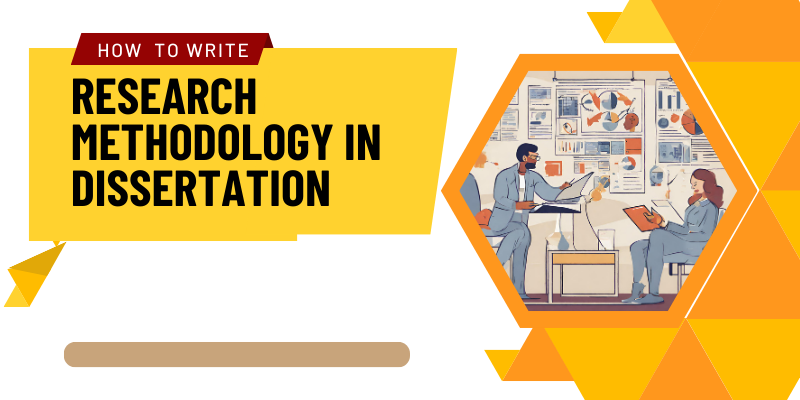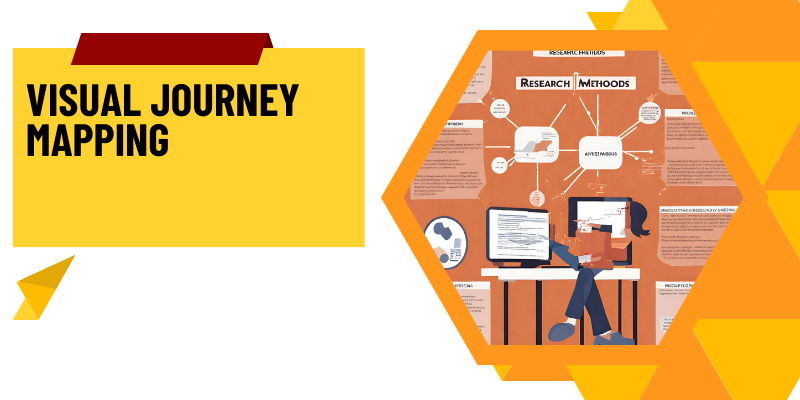
Welcome to our guide on writing the research methodology in dissertation case studies in 2024! This blog will help you understand the important steps in creating a solid research plan without using complicated jargon. We’re going to focus on a method called case study methodology, and we’ll show you practical examples to make things clear.
Research Methodology in a dissertation refers to the systematic approach and techniques employed to gather, analyze, and interpret data. It outlines the methods used for investigation, providing a clear roadmap for conducting the research. A well-constructed research methodology is crucial for ensuring the reliability and validity of the study’s findings.
Whether you’re a seasoned researcher or just starting, we aim to make the process easy to grasp. Research methodology is a key part of your dissertation, and by using case study methodology examples, we’ll guide you through it step by step. Our goal is to provide you with practical insights and a clear path to make your academic work stand out.
# What is Research Methodology in Dissertation Case Studies?
- Definition: Research Methodology in Dissertation Case Studies involves the systematic plan for conducting an in-depth examination of a specific subject.
- Focused Investigation: Centers on a single case or a few cases to explore complexities thoroughly.
- Case Study Methodology Example: Demonstrates how real-life instances are studied, providing practical illustrations.
- Contextual Understanding: Emphasizes the significance of the context in shaping outcomes and interpretations.
- Data Collection: Involves multiple sources such as interviews, documents, and observations to gather comprehensive information.
- Rich Insight: Enables a nuanced understanding of the subject, contributing depth and detail to the research.
- Applicability: Offers insights into real-world scenarios, enhancing the practical relevance of the dissertation.
# Describing Qualitative Research Methodology in Dissertation
- Qualitative research methodology involves exploring and understanding complex phenomena through non-numeric data.
- Utilizes methods like interviews, focus groups, and observations to gather in-depth insights.
- Adapts to evolving research questions, allowing for a dynamic and responsive approach.
- Emphasizes the researcher’s interpretation, capturing the richness and depth of human experiences.
- Aims to comprehend the context in which the research unfolds, providing a holistic perspective.
- Develops theories and concepts from collected data, allowing patterns to emerge naturally.
- Focuses on the authenticity and credibility of findings rather than statistical generalization.
So, let us dive into the top 3 UNKNOWN ways to write Research methodology in dissertation case studies about which you may not even HEARD ABOUT.
# Narrative Storytelling Technique
a) Engagement and Understanding:
- Human Connection: The Narrative Storytelling Technique fosters a human connection by presenting the research methodology as a relatable and engaging story.
- Reader Involvement: It invites readers to follow the research journey, enhancing their understanding of the qualitative research methodology in the dissertation.
- Memorability and Impact:
- Memorable Impressions: Narratives leave a lasting impression, making the research methodology more memorable for readers.
- Emotional Impact: By infusing elements of storytelling, the qualitative research methodology becomes emotionally resonant, leaving a lasting impact on the audience.
b) Complex Concepts Made Accessible:
- Simplified Complexity: The technique simplifies complex qualitative research concepts, making them more accessible to a broader audience.
- Illustrative Examples: Incorporating real-life examples into the narrative provides a practical demonstration of the qualitative research methodology’s application.
c) Holistic Presentation:
- Comprehensive View: By presenting the methodology as a narrative, a holistic view of the research process emerges, emphasizing the interconnectedness of various elements.
- Contextual Understanding: It allows for a more nuanced exploration of the qualitative methodology, ensuring a deep and contextually rich comprehension.
- Collaborative Method Design
Collaborative Method Design incorporates diverse stakeholder perspectives, enriching the case study methodology with a range of insights. Involving stakeholders with different backgrounds ensures a comprehensive understanding of the qualitative methodology in the dissertation.
Stakeholders contribute practical insights, making the case study methodology more applicable to real-world scenarios. Aligning the methodology with stakeholder input ensures its relevance and applicability within specific industries or contexts.
Workshops facilitate active engagement, enabling stakeholders to actively contribute to refining and shaping the case study methodology. The collaborative approach allows for collective decision-making, fostering a sense of ownership and commitment to the qualitative methodology.
Involving stakeholders helps identify potential blind spots in the case study methodology, ensuring its robustness. Collaborative design acts as a form of quality control, enhancing the overall credibility and reliability of the qualitative methodology in the dissertation.
- Visual Journey Mapping

a) Clarity Through Visualization:
Visual Journey Mapping presents the case study methodology in a graphical format, enhancing clarity and easing comprehension.
Each step of the qualitative methodology in the dissertation is visually depicted, providing a clear roadmap for readers.
b) Interconnected Elements:
The mapping showcases how different components of the case study methodology are interconnected, aiding readers in understanding their relationships.
Readers gain a comprehensive view of the qualitative methodology, appreciating the integration and flow of various elements.
c) Accessible to All Audiences:
Visual representations transcend language barriers, making the case study methodology accessible to a global audience.
Appeals to diverse learning styles by catering to those who grasp concepts better through visual cues, ensuring inclusivity.
d) Facilitating Communication:
Visual Journey Mapping serves as a tool for efficient communication, allowing researchers to concisely convey complex ideas regarding the qualitative methodology.
Facilitates collaborative discussions by providing a shared visual reference, promoting a more inclusive and collaborative approach to case study methodology examples.
# How to Write and Structure the Methodology:
i) Introduction:
Briefly remind readers of the study focus and research aims.
Provide a concise outline of the chapter structure.
ii) Methodology Section:
Present key methodological choices logically and intuitively.
Cover components like research philosophy, type, strategy, time horizon, sampling, data collection, and analysis methods.
iii) Methodological Limitations:
Discuss trade-offs due to constraints.
Critically evaluate limitations and explain mitigation strategies.
iv) Concluding Summary:
Offer a summary, potentially using figures.
Ensure the summary aligns with previously discussed content.
Note: Justify every choice, check university guidelines, and openly acknowledge limitations for a robust methodology chapter.
Final Thoughts
In wrapping up our guide on “How to Write Research Methodology in Dissertation in 2024,” we’ve covered important stuff to help you succeed. Understanding how to go about research methodology, especially in dissertation case studies, is like having a reliable map for your academic journey. We highlighted the significance of using qualitative research methodology in dissertations, aiming to simplify the process.
Choosing the right approach—be it collaborative design, narrative storytelling, or visual journey mapping—adds clarity and makes your work more engaging. Crafting a solid research methodology is like setting a strong foundation for your project.
As you tackle your dissertation, keep in mind that a well-thought-out research methodology is your guide. Dive into case study examples and qualitative research methods, making your dissertation a standout piece. Here’s to a successful academic journey, where your research methodology leads you to meaningful discoveries in 2024 and beyond.
Chanakya Research is a research consulting organization that provides comprehensive support services for doctoral candidates and master’s students, specializing in customized consultation and guidance. They offer methodology consultation services for research methodology that can make it easy for researchers to develop robust and effective research methodologies. Their expert consultants understand the significance of a well-designed methodology in ensuring the reliability and validity of research.
With a deep understanding of various research methods and data collection techniques, their consultants will guide researchers through the process of selecting the most appropriate methodologies for their study. Chanakya Research has been providing research support services since 2008 and has helped over 500+ consultants. They offer customized consultation for personalized research guidance, ethical practices ensuring academic integrity, and affordable services without compromising quality.
FAQs
a) What is the importance of research methodology in a PhD?
– It ensures a systematic and rigorous approach, laying the foundation for credible and meaningful research.
b) What belongs in a dissertation’s methodology section?
– It details the methods used for data collection and analysis, providing a roadmap for the study’s validity.
c) When is qualitative research methodology appropriate?
– It is suitable when exploring complex, context-dependent phenomena, offering in-depth insights and understanding.
d) How to correctly choose the methodology for a dissertation?
– Chanakya research can help you to consider the research question, nature of data, and objectives, aligning the methodology with the specific goals of the promotion-related study.
e) What is the methodology for implementing a thesis?
– Develop a structured plan outlining research methods, data collection, and analysis approaches to implement the thesis effectively.
